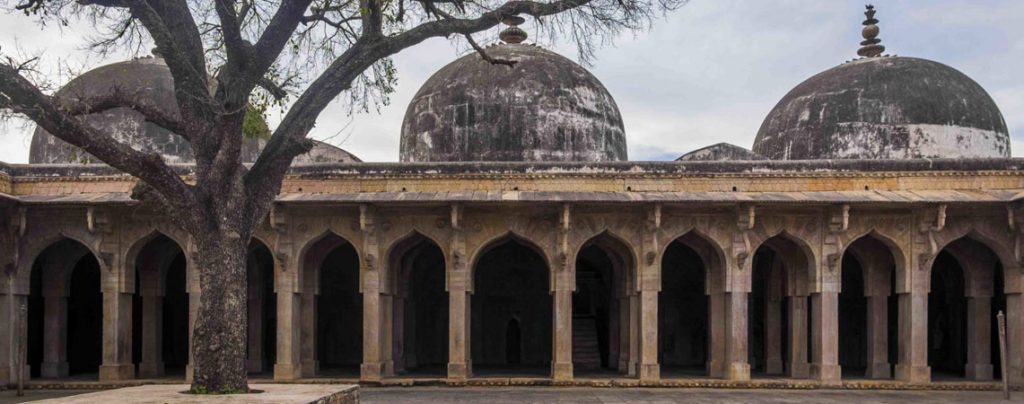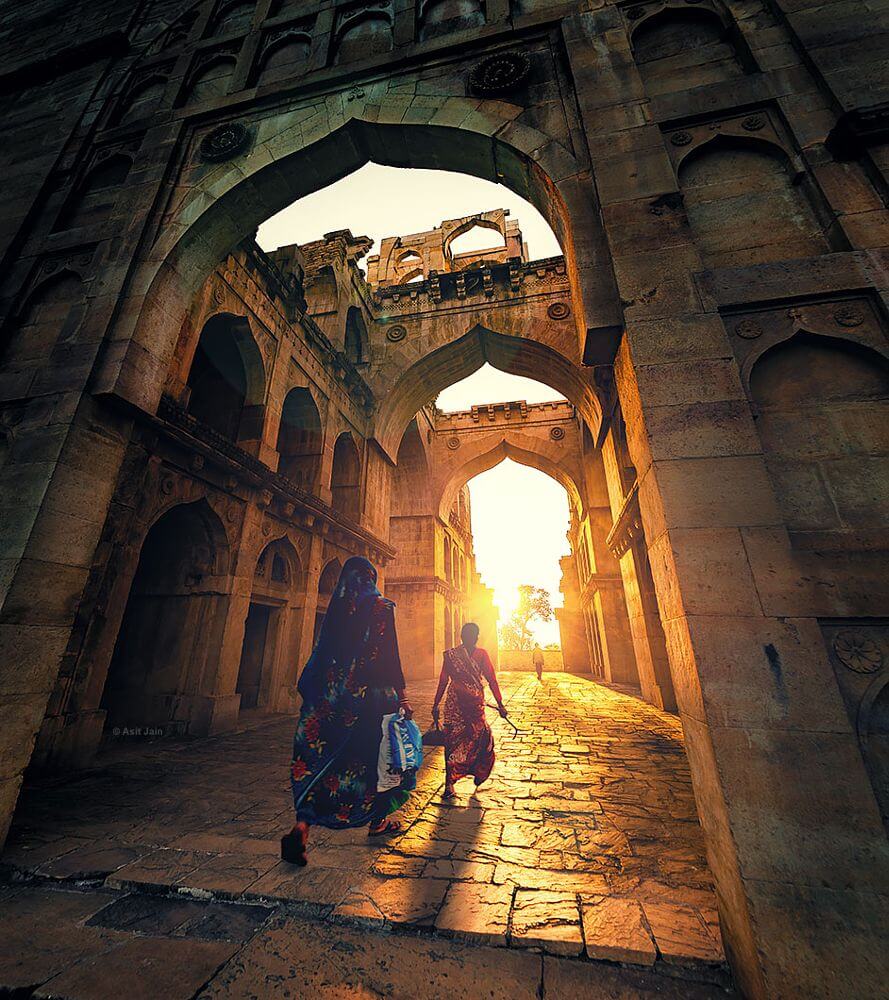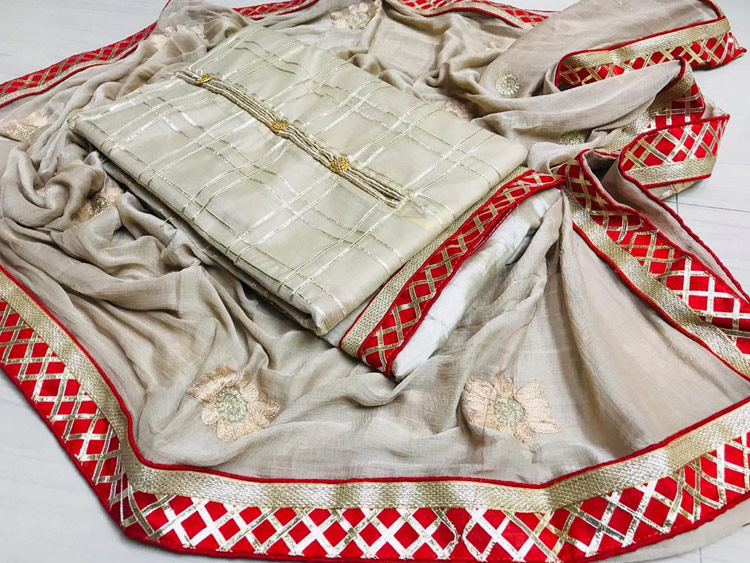

An Article by Anoushka Srivastava
Anoushka Srivastava is in her penultimate year of Textile designing at National Institute of Fashion Technology. She takes deep interest in the arts, aesthetics and culture of India, and the active agents in her otherwise lazy life are her mother and older sister.
Chanderi; situated in northern Madhya Pradesh, 36kms west of Lalitpur (Uttar Pradesh), is a tehsil of Guna district (MP). The city is a melting pot, a home to Muslims, Hindus and Jains. Chanderi was an important fortress and administrative center during the Malwa Sultanate (15th century) and until a few years ago its fortifications were still standing.
History of Chanderi Town
The town of Chanderi also known in the past as Chandagiri and Chandrapuram, has witnessed the rise and fall of several dynasties but there is no actual consensus on when it was found, primarily due to lack of written evidence. One source attributes its foundation to King Ched, who is said to have ruled over this region around 600 BC. Chanderi is also given a mention in the travelogues of the famous travelers, Al Beruni and Ibn Batuta. Another mention of Chanderi is during the reign of the Gurjara-Pratihara dynasty, when King Kirtipal shifted his capital to Bodhi Chanderi around 11th Century AD. Not much is known about the Gurjara-Pratihara kings of the region around Chanderi, other than the information yielded on an inscription found at Chanderi. Chanderi was lost to the Delhi Sultanate when Ghiyauddin Balban, a minister of Sultan Naseeruddin, attacked Chanderi in 1251-52 AD. When Allauddin Khilji became the Sultan of Delhi, he installed one of his most trusted nobles, Malik Tamar Sultani, under whose rule Chanderi was taken over by the Tughlaq Dynasty. From 1351-1388 AD, Chanderi was a part of the Delhi Sultanate, after which it was seized by the Malwa Sultans who incorporated it into their domains. After Chanderi was annexed by the Malwa Sultanate, from 1512-1515 AD, it was seized by Sikander Lodi Sultan of the Delhi Sultanate. Again in 1520 AD Chanderi was taken over by Rana Sangha, the king of Chittorh until 1528 AD, when the Mughal onslaught by Emperor Babur was victorious in capturing the fort at Chanderi. In 1605, Jehangir, on behalf of the Mughal court, handed over the rule of Chanderi to the Bundela Rajputs, who in turn ruled Chanderi till 1811 AD. In 1811 AD, Chanderi was taken by Colonel John Baptise Filose for Daulat Rao Scindia, who incorporated Chanderi in the Scindia estates. Kunwar Mardan Singh, one of the last rulers of the Bundelas annexed Chanderi from the Scindias in 1844 AD and made huge advances to restore Chanderi’s art, architecture, administration and political power. In 1858 AD, the English sent Sir Hugh Rose to capture Chanderi. In the siege, the English prevailed and Mardan Singh was incarcerated and sent to Vrindavan for the rest of his life.
Chanderi suffered a lot in the 1857 uprising, it was plundered incessantly and partially burnt down. On December 12, 1860 AD, a treaty was signed between the British and the Scindias, and Chanderi was returned to the Gwalior estates.
Vestiges of the past are present everywhere: ruins, old buildings, inscriptions which nobody is truly able to decipher, sati stones bespeak of a glorious ancient urban past. For Muslims, it goes back to the Muslim malwa sultanate. Jain inscriptions are even older. Hindus and Jains strongly believe that the ruins of Burhi Chanderi, 17 kms north of the present town are evidence of the existence of a Hindu and Jain urban settlement there, prior to the advent of the Muslims. Many people in the city have heard about the description given in Ain-i-Akbari and believe in its accuracy:
“Chanderi was one of the largest of ancient cities and possesses a stone fort. It contains 14,000 stone houses, 384 markets, 360 spacious caravanserais and 12,000 mosques.”
Spinning Love- Chanderi Fabric
Nestled between the low and humble hills of the Vindhyachal ranges, the town of Chanderi has not only been a cradle of many historical events but also of a rich tradition of Chanderi sarees, the beauty of which lies in its finesse, softness and transparency. Chanderi is known to have its origin back in the Vedic Period, and is believed to have been founded by Lord Krishna’s cousin, Shishupal. The Chanderi produces three kinds of fabrics: Pure Silk, Chanderi Cotton and Silk Cotton. The motifs have come a long way from the traditional coin, floral and peacocks to the geometrics.
In the year 1910, the royal family of Scindia brought the Chanderi saree under their patronage and during that period gold thread motif made its presence in the main body of the cotton muslin saree for the first time. It further led to the introduction of the silk yarn and over the years dobby and jacquard use came into existence. Some of the various beautifully striking motifs include ‘Nalferma, ‘Dandidar, ‘Chatai’, ‘Jangla’, Mehndi wale haath’ etc.
Chanderi was always woven using hand spun cotton warps and wefts. It was spun as fine as 300 counts, and was as prized amongst cotton fabrics as the famed muslins of Dhaka. The British imported cheaper 120 to 200 count cotton, which greatly eroded the market for the more expensive Chanderi cloth. Referred to as ‘woven air’ because of its transparency and the sheer texture of the fabric, Chanderi sarees known for their light weight and glossy texture that is different from any other textile woven or produced in the country. They owe this characteristic due to the high-quality and extra fine yarns that are used in weaving. The yarn used to weave Chanderi fabric doesn’t go through the degumming process to prevent breakage during weaving, giving the fabric its unique shine and texture.
There are three main categories of saris based on the material used. The product ranges from cotton to pure silk, i.e. silk by silk, silk by cotton, cotton by cotton and zari by silk. This cluster is known for producing the most intricate figured effects by jala or harness which are now done by dobby and jacquard, fine cotton counts and deniers, combination of strong colours as well as muted tones. The buttis on the fabric are hand-woven on handloom. The buttis are made by use of needles. Number of needles used depends upon the number of buttis and its size. For each butti/butta a separate needle is used. The design layout has been undergoing some changes to match demand, but it remains deficient on several accounts.
The Chanderi material is now being used to make stoles, scarves, cushions, dupattas, draperies, and suit material. Safas or long scarfs for weddings and cotton pagris have also been a prominent product of this cluster and they are still adorned by the royal and elite families of Indore and Gwalior. About 25 to 30 years ago, the Jacquard mechanism for the border of Chanderi saris was introduced in Chanderi by the artisans from Banaras who also introduced the rolling log at the same time. The Sling mechanism for carrying the shuttle across the warp was introduced by artisans from Nagpur in the 1960s. Before that, an animal horn with a hole at its tip was used for taking the weft threads across the warp threads.
The traditional product designs of the cluster can be broadly classified as follows:
- Nalferma silk designs wove in the body with 3 shuttles and 2 weavers.
- Dandidaar bamboo striped border with motifs.
- Chatai geometrical border with coin motifs, florals.
- Jangla designs inspired by historical relics.
- Mehendi wale haath design inspired by culture uses and extra warp.
- Sooraj Mukhi and Sadda Suhaghan Raho saree for weddings
*(warp 20/22 denier silk and weft 100s cotton)
Fabindia tied up with Chanderi cluster in the year 2004-2005 and its product basket is on an increase ever since, from apparel to home décor i.e. curtains, cushion covers etc. ‘The Rajwada collection’ of Fabindia is an ode to this fabulous textile.
They have used the rich Chanderi fabric as it never goes out of style plus it adds that much needed element of warmth to the rooms during winters. Along with product diversity, the artisans and Seths have started experimenting and recycling the old stock of their products by introducing block printing and batik on the Chanderi fabrics.
A fabric is a spun story that has seen the rise and fall of many dynasties and wrapped itself snugly, brilliantly and gloriously on bodies of people and lives that makes it and wears it.






















